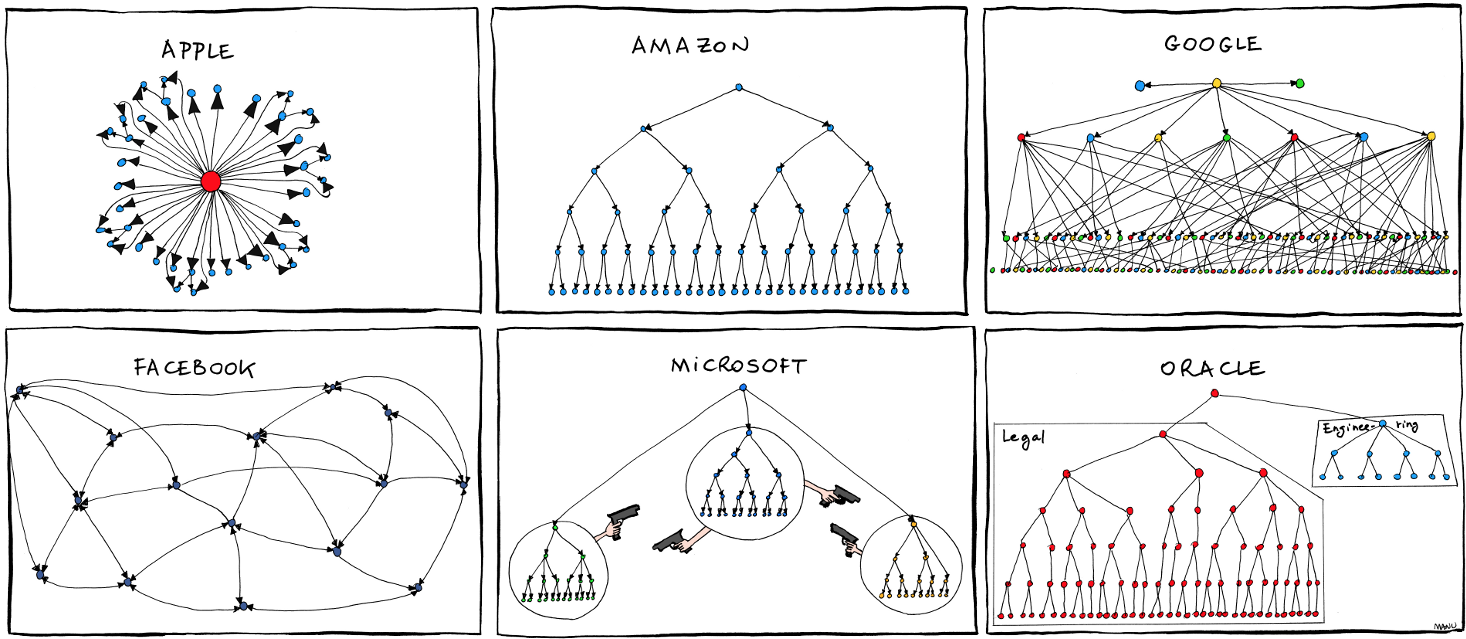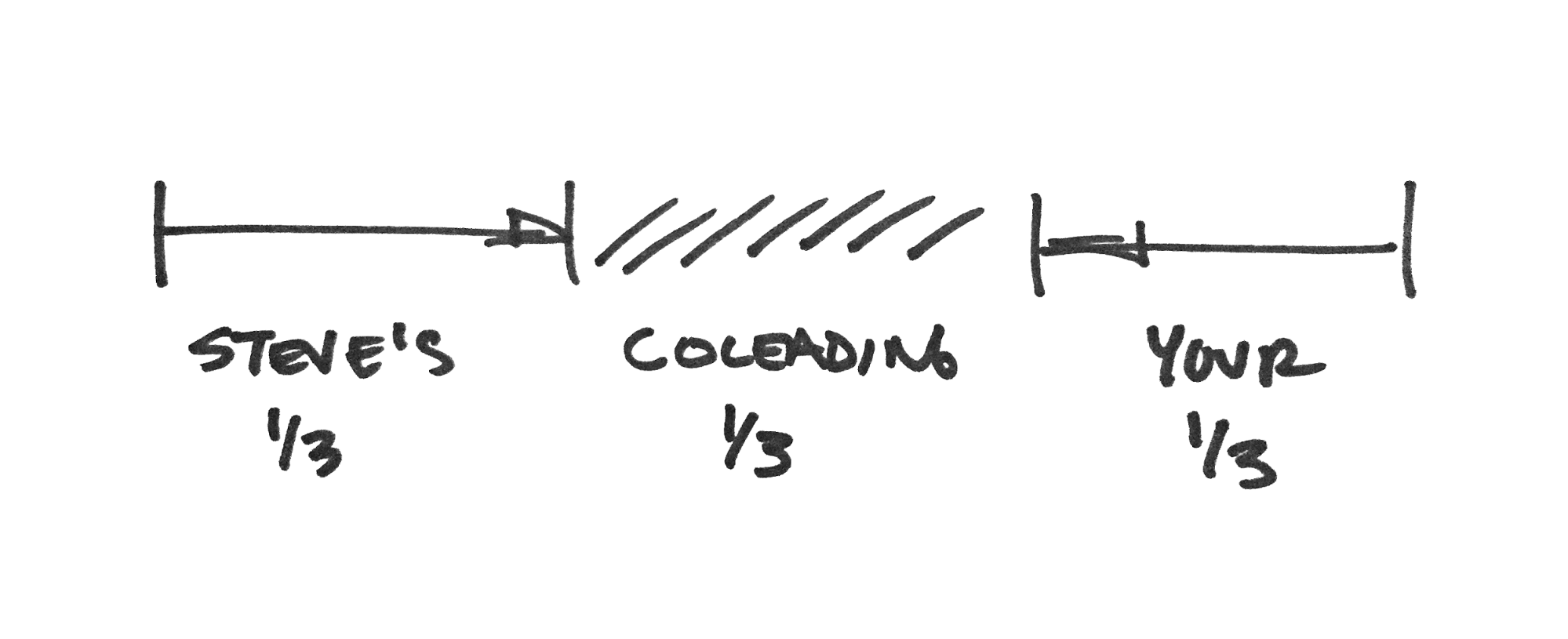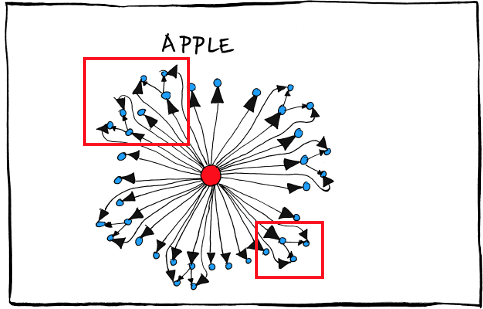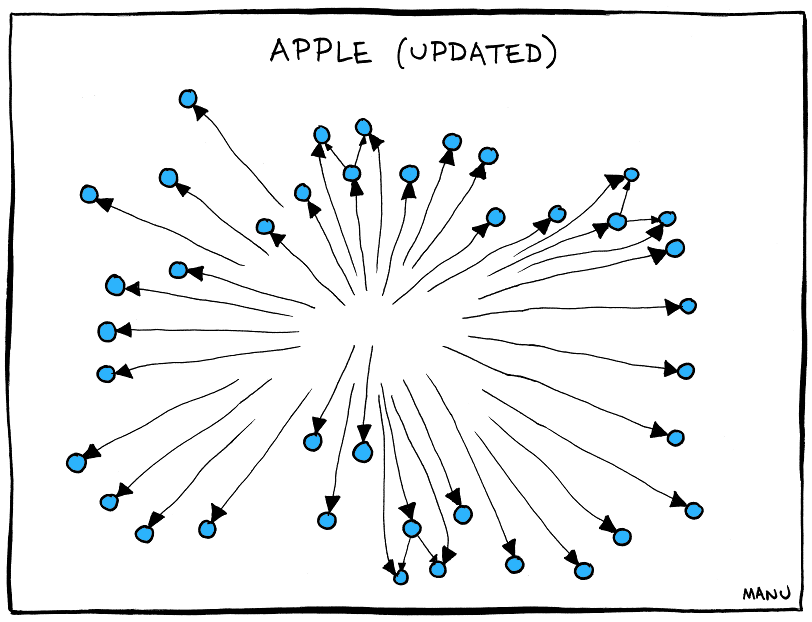Last week, I shared a story about an encounter I had with Steve Jobs and broke down some of the tactics of Steve the 'showman' used to dazzle us at each new Apple event. But the most interesting parts of Steve are the ones that existed between the product launches. The 'design leader' is the Steve I'm most interested in, the man that could effectively drive innovation and move his organization forward.
People often poke fun of what they saw as Steve 'the dictator.' This comic by Manu Cornet does a great job of representing the different styles of leadership practiced by the tech giants. Steve is appropriately represented by the big red dot below:
 The leadership structure of today's big tech companies by Manu Cornet
The leadership structure of today's big tech companies by Manu Cornet
But there's more to Steve's leadership, and this comic, than meets the eye. According to members of his innercircle, his approach actually gave varying levels of freedom to his team. Although this drove them crazy, this flexible scale ultimately brought out the best in both the team and the company. Essentially, Steve broke down each decision into three parts with two possible outcomes.
The Rule of Thirds

Steve's 1/3: He's 'right' and came with a strong opinion.
If you read tech news or heard the rumors, this is the stereotypical representation of his leadership style. Yeah, he was probably aggressive at times and more of a dictator, but he was leading with a strong point of view. He'd make some broad statement to set a direction for his team to figure out.
His biographer, Walter Isaacson, once shared a story where Steve demanded that the boot up time for the Macintosh operating system be shortened. The engineer who was working on it, Larry Kenyon, told him it was impossible, but Steve interrupted 'If it would save a person's life, could you find a way to shave 10 seconds off the boot time?' Sure enough, Kenyon shaved 28 seconds off the bootup time.
Your 1/3: He accepted your point of view.
Now this could be confused with acquiescing if you believed Steve was a dictator, but what he was doing was leading through the culture he had established in the Apple turnaround. He felt confident to empower his team to make decisions.
You can see it in his most memorable big reveal, arguably the 1998 release of the iMac. Less than ten months of Steve's return as interim CEO, it was a game changing product that kicked off Apple's turnaround and emboldened Steve to push harder into breaking down standards. Steve understood he could encourage behaviors that benefited the business. In his public proclamation, he makes numerous mentions of the team and the hard work they put in to make the effort work.
Coleading 1/3 : The space to fight for answers.
I'd argue this is where his true genius lived. He empowered employees to step up, manage up and secure the space to work together. He lead alongside of his team. You can see it in his some of his work sessions. His leadership style was full of creating opportunity.
This middle ground was totally up for grabs, Steve didn't even really want it. But yet he expected you to earn it and made you fight tooth and nail for it. It wasn't even a wrestling against Steve, it was a wrestling against yourself and your own demons. This middle space was a proving ground, a forge, where only the most passionate people and highest caliber ideas emerged from. True, Steve created the arena but he didn't determine the victor, you did.
You Win, Everybody Wins
And as others watched and determined there was real substance there, they would be compelled to fight with and for you. By the time that piece was won, if it was won, there was so much commitment and support that it was almost impossible for the idea to fail. It was exhausting, but it separated the wheat from the chaff and made everyone better for it.
Guy Kawasaki, a recent ZURB Soapbox guest, positioned it this way, "If you ask an employee of Apple why they put up with the challenges of working there, they will tell you: because Apple enables you to do the best work of your career."
Steve Wins, Everybody Loses
Those who came in ill-prepared or half-assed were immediately sized up by Steve, chewed up and spit out. This was not something you could fake your way through. He'd crush you and take that piece back. People who view Steve as a dictator wrongly conclude that this is what he wanted, that he wanted 2/3 of the decision making. But for Steve, this was a last resort. This is what he did when no one had the guts to move things forward themselves, so he had to jump in to ensure forward momentum. It wasn't victory for Steve, it was defeat.
The Magic of the Middle
By providing this middle ground that was up for the taking if you wanted it enough, Steve was nurturing shared leadership and ownership in his team and that lead to great things. People were compelled to connect to each other and rally around ideas, doing whatever they need to bring them to fruition because their own intrinsic motivation. It's incredibly difficult to achieve and maintain, but this is the sweet spot where teams perform their best and magic happens. You can see it in the comic:

In Steve's absence, things at Apple are looking a little different:

Without this contested middle space, there is no wrestling to bring the best ideas and people forward. The mojo is lost and everyone relentless pursues their own paths with little connection between.
But why does it work?
It forces people to own more decisions: You couldn't suggest an idea or disagree with Steve without backing it up. While he was open to other points of view, he tolerated nothing less than full commitment. Otherwise, he'd shoot them down immediately. This resulted in new ideas that were well thought out, researched, and more importantly, had somebody passionate to support them and see them to completion.
It maintains forward momentum: Often taking the role of the provocateur, he galvanized his team behind outrageous challenges and outlandish demands that got them unstuck and moving forward. When others shared different viewpoints, the ensuing struggle to defend and grow that idea pushed the team farther than they would have gone otherwise.
It compels people to perform at their best: Steve understood that intrinsic motivation is far superior to extrinsic. Through challenges, orders, or the occasional motivating speech, he stretched them and got them to perform at their full potential. It was an often painful process, but nearly all of those under him remark that they reached levels they never thought they would be able to.
There will never be another Steve Jobs, and it's a futile endeavor to try and mimic everything he did in hopes of achieving his same success. But it is possible to get your team into that same sweet spot he was able to through giving them a space to fight for their ideas. It's possible to transform your organization into an environment where innovation thrives. And it's possible to achieve, as both individuals and companies, more than we ever thought possible.

Bryan Zmijewski
Leading the charge at ZURB since 1998
Our fearless leader has been driving progressive design at ZURB since 1998. That makes him quite the instigator around the offices, consistently challenging both the team and our customers to strive to always do better and better.
Learn more '
Follow him at @bryanzmijewski